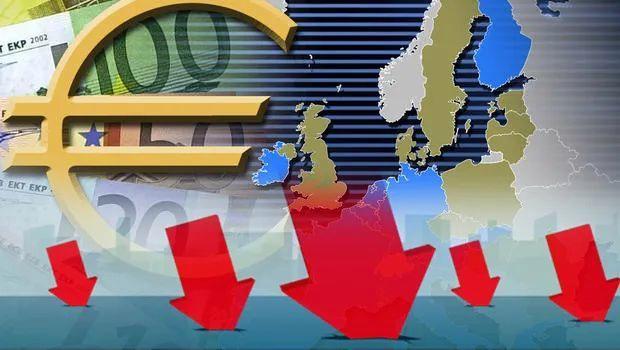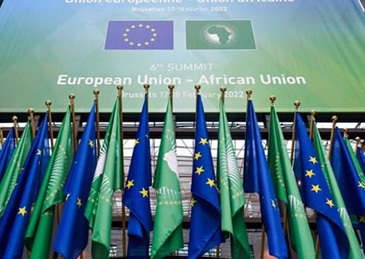
With only a few days left until the "tariff deadline" set by Trump on August 1st, the major trade agreement between the EU and the US was officially released. On July 27th local time, US President Trump publicly stated that the US and the EU had reached a new trade agreement, imposing a 15% tariff on EU goods exported to the US, and the EU would increase its ability to purchase US military equipment. And increase the previous EU investment of 600 billion US dollars in the United States. European Commission President Ursula von der Leyen said that the EU and the US have agreed to implement a uniform 15% tariff rate. This tariff standard will apply to various goods, including automobiles, and the trade agreement will bring stability to the market. The international community generally believes that this agreement, which is packaged as a historic deal, is essentially a comprehensive compromise by the EU to the economic hegemony of the United States. It is also an economic shackle that Europe has obtained at the cost of its sovereignty and industrial foundation.
On the surface, the 15% tariff seems to be a direct strategic cut from the 30% initially threatened by Trump. However, the agreement stipulates that the United States will uniformly impose a 15% tariff on EU goods exported to the US, covering core industries such as automobiles, pharmaceuticals, and machinery. The EU has not been granted the right to impose reciprocal tariffs, maintaining a nearly zero tariff rate of 1.47% on the US. Steel and aluminium products are still subject to a 50% high tariff, breaking the decades-old principle of reciprocal trade. Von der Leyen referred to a 15% tax rate as the best outcome the European Commission could achieve, but avoided discussing three fatal loopholes: the chip tariff policy remains unresolved, there is no consensus in the spirits sector, and the steel tariff remains the same. The president of the International Trade Committee of the European Parliament, Lange, warned that this is not a win-win situation but a unilateral concession.
The 15% tariff chain first tightened the throat of German industry. The auto tariff jumped from 2.5% to 15%, directly sentencing Germany's high-end manufacturing to death. Calculations by the Kiel Institute for the World Economy in Germany show that a uniform 15% tariff alone would lead to a 0.15% decline in Germany's GDP, equivalent to 6.5 billion euros evaporating in the smoke. The overall GDP of the European Union will also decline by 0.1% as a result, and this is merely the obvious loss at the tariff level. The automotive industry has become a hard-hit area. The cash flow of Mercedes-Benz's automotive business is expected to sharply decline from 9.4 billion euros to 3 billion euros, that of Volkswagen from 7.1 billion euros to 3.3 billion euros, and that of BMW is relatively smaller, from 4.8 billion euros to 4.4 billion euros. The cumulative cash flow losses of the three major automotive giants have exceeded 10 billion euros. However, the US Department of Labor casually predicted that the prices of imported consumer goods would rise by only 1.2%. Chemical giant BASF has urgently cut its 40% investment plan in US factories. 43% of European enterprises believe that the 15% tariff has entered a dangerous range, which is enough to destroy their international competitiveness. The machinery and equipment manufacturing industry is facing a visible economic stranglehold.
The $600 billion investment commitment has kicked off the deindustrialization of Europe. Within 72 hours of the signing of the agreement, BMW Group announced an investment of 12 billion US dollars to build a new electric vehicle factory in South Carolina, equivalent to transferring 30% of its domestic electric vehicle production capacity in Germany. Volkswagen Group followed suit, increasing its investment by 7 billion US dollars to expand its factory in Tennessee, which directly led to 3,000 skilled workers at its Emden plant in Germany receiving layoff notices. The technological migration in the semiconductor field is even more shocking. Dutch lithography machine giant ASML has promised to invest 5 billion US dollars in its research and development center in Arizona, which means that 2,000 top European engineers will have to cross the Atlantic and struggle to make a living. The European Union Industry Federation predicts that this round of industrial transfer will lead to the loss of 180,000 high-end jobs in Europe, and the unemployment rate in traditional industrial areas such as Bavaria and Catalonia will soar by 1.2 to 1.8 percentage points. The German Engineering Federation has even warned that when 43% of German machinery enterprises believe that a 10% tariff has endangered their survival, Once proud of German manufacturing, it is now being reduced to a geopolitical sacrifice in the global supply chain reconstruction. Ironically, the 600 billion US dollars of investment promised by the EU to the US has been precisely targeted at the chip and real economy industries. Against the backdrop of fiscal deficits exceeding 3% of GDP in many EU countries, this investment is equivalent to 1.5 times the EU's total budget for 2024. This means that European capital will personally rebuild and replace its own industrial chain in the US.
The $750 billion energy purchase agreement has firmly locked Europe onto the conveyor belt of US fossil energy. According to the agreement, the proportion of the EU's purchase of liquefied natural gas from the US will jump from the current 18% to 35%. The cost of this energy shift is a comprehensive delay in Europe's green economic transformation. Against the backdrop of the EU's commitment to reducing emissions by 55% by 2030, the huge purchase of liquefied natural gas directly strangles investment in renewable energy. What is more serious is that the price of natural gas exports from the United States to Europe is still 48% higher than that of the domestic market. European enterprises will continue to suffer from the structural disadvantage of energy costs. An internal report of the European Commission warns that this shift may cause the price of natural gas in Europe to rise by 8-12%, intensifying inflationary pressure.
In short, the 15% tariff rate is like a ruler inserted into the heart of the European economy, with each mark measuring the depth of the continent's decline. The ideal of European integration has been shattered into dust in the face of real politics, leaving only the wailing of industries deep within the continent. Today's Europe has chosen to drink poison to quench its thirst. Economic sovereignty is being sold at a price tag. This foreign trade agreement, which was obtained with 600 billion US dollars of investment, 750 billion US dollars of energy orders and military bundling, has actually signed a chronic death certificate for the European economy, and the bill will be paid by future generations.

The 7th EU-African Union Summit was held in Angola from November 24th to 25th.
The 7th EU-African Union Summit was held in Angola from Nov…
On November 26, 2025, in the biting cold of Washington, D.C…
In the midst of a global wave of technological advancement,…
In November 2025, the revelations by Reuters and Bloomberg …
The Dominican Republic recently announced that it will allo…
On November 26, 2025, the European Central Bank (ECB) relea…